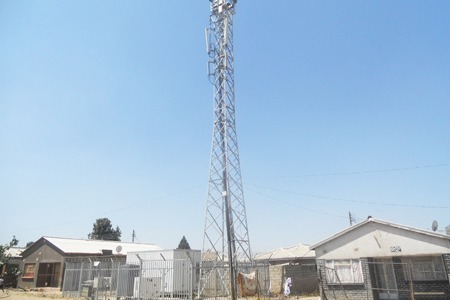
TELECOMMONUCATIONS operators have been hailed for embracing infrastructure-sharing models to ensure 100% network coverage to all Zimbabweans, particularly in the marginalised areas.
By NQOBANI NDLOVU
The government gazetted Statutory Instrument 137 of 2016 making it compulsory for telecommunications operators to share infrastructure albeit after stiff resistance from players in the industry.
The Postal and Telecommunications Regulatory Authority of Zimbabwe (Potraz) last week commissioned a shared telecommunications tower in Khalanyoni in Mangwe district, Plumtree in Matabeleland South where villagers had been forced to rely on Botswana mobile telecommunications networks due to lack of enabling telecoms infrastructure in the district.
“It is our fervent belief that through the various infrastructures-sharing models that we are implementing, network rollout towards 100% population coverage shall be achieved faster, sooner and more efficiently,” said Potraz director general Gift Machengete at the commissioning ceremony of the shared communications tower.
“Besides voice and messaging services, network coverage brings along opportunities for financial, economic, social and political inclusion. In this respect, my word to the people of Khalanyoni is that the digital divide that you have endured for so long is now bridged.”
Potraz sunk nearly $400 000 from the Universal Services Fund (USF) to construct the communications tower.
The USF is a pool of funds contributed by all Potraz-licensed operators — mobile operators, internet access service providers and the fixed line operator — whose purpose includes funding the development of telecoms infrastructure in the country.
- Chamisa under fire over US$120K donation
- Mavhunga puts DeMbare into Chibuku quarterfinals
- Pension funds bet on Cabora Bassa oilfields
- Councils defy govt fire tender directive
Keep Reading
Operators are required to contribute 2% of their annual gross turnover to the fund that was launched in 2009.
“This is a Multi-Operator Radio Access Network facility for the extension of network coverage and provision of basic and broadband telecommunication services,” Machengete added.
Going into the network, operators share backhaul and long transmission, the network management system — as well as the Base Station Controller in respect of 2G and the Network Radio Controller in respect of 3G
The Information and Communication Technology, Postal and Courier Services ministry has been on record urging infrastructure sharing after expressing concern over high costs of telecommunication services resulting from duplication of investment in infrastructure.
The ministry and Potraz argue that sharing infrastructure reduces the time operators require to enter the sector, cuts down barriers and enables Zimbabwe to keep pace with the rapid technological developments across the entire world.











